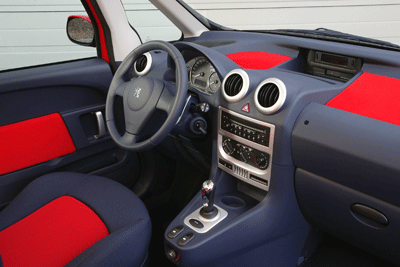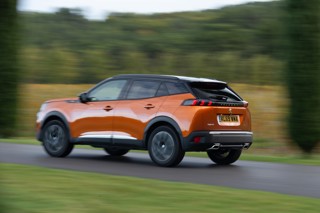Review
The manufacturer does not under estimate the challenge ahead, described by commercial director Paul Philpott in this way: “Our likely buyers are in their 20s and 30s but we must not make them feel like a target audience, because they don’t like it.
“For many, Aygo will be their first new car and though some may later buy other makes, we want them to remember a good experience and return to Toyota.”

The marketing emphasis in on the model name, with ‘AYGO by Toyota” in a red disc on ads and marketing material. Toyota will talk to potential buyers in their language: Aygo (say i-go) will this summer sponsor rock music festivals, featuring ‘Aygo like a rabbit’ and “Aygo in my tent” sweatshirts.
The first issue of an Aygo magazine has been printed, and “do something memorable” billboard posters will look like graffiti on walls, mentioning Aygo but not Toyota. Marketing speak goes like this: “Aygo is targeted at young, active urban individuals who enjoy a spontaneous approach to life and leisure.”
All Aygos have speed-sensitive power steering, tilt-adjustable steering column, front airbags, ABS with electronic brake distribution and CD player with MP3/iPod connection. Aygo Plus additions include electric front windows, side airbags, remote central locking and better audio – Aygo Sport adds alloys, tachometer and front fog lamps.
At launch, all three models use Toyota’s new 1.0-litre, VVT-i 67bhp engine, which at 67kg is claimed to be the lightest car combustion unit available, with “class-leading” power and lowest fuel consumption and CO2 emissions. Insurance is in the lowest band (1E).
Toyota believes its brand has the most strength (“Citroen already has C2 and C3, and Peugeot also has to sell the 107-based 1007, which looks expensive,” says Philpott).
Toyota and PSA equally shared the £1bn investment in a new plant at Kolin, in the Czech Republic, which has an annual capacity of 300,000 – equal to a car a minute (Aygo accounts for one third of production).
The three models, seen at Geneva show in March, are visually distinctive but the basic design is Toyota’s (PSA’s contribution is the seats, parts procurement and the 1.4-litre, 53bhp diesel engine to be added from early 2006). It is likely to account for a maximum 10% of Aygo sales.
Unfortunately all the engine and gearbox combinations result in cars which are on the slow side, while the diesel engine is on the far side of painfully slow. Part of the reason is that the 1007 is a heavy car for its size, weighing in at about 1,100-1,200kg, and these are not powerful engines.
They’re fine for stop-start city work, but on an open road acceleration above 30mph is laborious. The best is the bigger petrol engine, and the 2-Tronic box is slicker, smoother and sharper than its Citroen Sensodrive cousin, but it is still not silky.
Peugeot executives promise more powerful engines in the future and to be honest. They can’t arrive too soon.
The driving experience is also adequate, at best, for a car of this type. There is plenty of room up front and the seating position is comfortable (although the steering wheel was offset heavily on the left-hand drive models at launch) but the ultra light electric steering is fine around the city, although it doesn’t really weight up much as speed increases. Driving on open roads in thr 1007 is about getting from A to B – don’t expect much fun.
Because of the distance of the B-pillar, the seat belt is miles away and, for smaller drivers, comes from such an angle that it cuts into the neck and it is a stretch backwards to reach it. Immobile, older drivers, for whom this car’s easy access would be ideal, would find this a real struggle.
It’s much of the same with the rest of the car. There’s plenty of space up front, less so in the back and very little in the boot. The rear seats can be slid forwards and also hinged up against the front seats, but it’s a very flimsy feeling system and you can’t have the front seats very far back when the rears are butting against them.
To lock the front seats in place you have to slide them right back first and then forwards, so you have to guess at the point at which the folded rear seats will sit. It just feels a little nderdeveloped.
Driving verdict
On the whole, Peugeot is on to something here with those rather cunning doors and funky looks but there are issues of engines and the whole driving experience which need to be addressed. Some longer warranties on those electric doors wouldn’t go amiss either.
Prices: £10,850 – £12,600
Model : 1.4; 1.6; 1.4 HDi
Engine: 1,360; 1,587; 1,398
Transmission: 5spd with optional 2-Tronic Power (bhp)/ 75/5,400; 110/5,750 rpm 70/4,000
Max (lb-ft): 88/3,300; 110/4,000; rpm 120/2,000
Max speed: 102 mph; 117mph; 99mph
0-62mph: 14.4; 11.8; 15.4sec
Efficiency (mpg): 45.6; 42.8; 64.2 (comb)
CO2 emissions: 153; 156; 115 (g/km)
Rivals: Ford Fusion; Honda Jazz; Fiat Idea; Vauxhall Meriva

Factsheet
No information available.














Login to comment
Comments
No comments have been made yet.